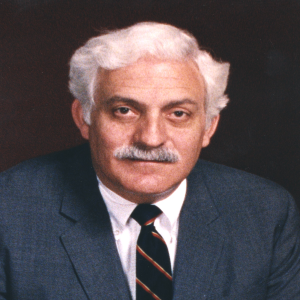In memory of Dr. Raymond V. Damadian

Accepted: 8 September 2022
HTML: 129
All claims expressed in this article are solely those of the authors and do not necessarily represent those of their affiliated organizations, or those of the publisher, the editors and the reviewers. Any product that may be evaluated in this article or claim that may be made by its manufacturer is not guaranteed or endorsed by the publisher.
Dr. Raymond Damadian, Father of the MRI, passed away on August 3, 2022. In this Letter to the Editor, we discuss Dr. Damadian’s seminal discovery, his path to making the first MRI machine, as well as the work he did in his later years on the dynamics of CSF flow in neurodegenerative disease. We hope to honor the legacy of such an influential character in radiology history and inspire others to continue to continue to explore, innovate, and cure disease with his technology for years to come.
Damadian R, Solomon AK. Bacterial Mutant with Impaired Potassium Transport and Methionine Biosynthesis. Science 1964;145:1327-8. DOI: https://doi.org/10.1126/science.145.3638.1327
Cope, FW, Damadian R. Cell potassium by 39K spin echo nuclear magnetic resonance. Nature 1970;228:76-77. DOI: https://doi.org/10.1038/228076a0
Damadian R.“Tumor detection by nuclear magnetic resonance. Science 1971;171:1151-1153. DOI: https://doi.org/10.1126/science.171.3976.1151
U.S. Patent 3,789,832, Raymond Damadian, Apparatus and Method for Detecting Cancer in Tissue, Filed 1972.
Damadian R et al. Human Tumors Detected by Nuclear Magnetic Resonance. Proceedings of the National Academy of Sciences 1974;71:1471-1473. DOI: https://doi.org/10.1073/pnas.71.4.1471
Damadian R. Field focusing n.m.r. (FONAR) and the formation of chemical images in man. Philosophical Transactions of The Royal Society Biological Sciences, London 1980;289:489-500. DOI: https://doi.org/10.1098/rstb.1980.0067
Damadian RV, Chu D. The possible role of craniocervical trauma and abnormal CSF hydrodynamics in the genesis of multiple sclerosis. Physiological Chemistry and Physics and Medical NMR 2011;41:1-17.
Zamboni P. 2018. The contribution of extracranial venous drainage to neuro-inflammation in multiple sclerosis. In: Minagar A, ed. Neuroinflammation. London: Elsevier; 579–599. DOI: https://doi.org/10.1016/B978-0-12-811709-5.00036-3
Haacke EM et al. The role of magnetic resonance imaging in assessing venous vascular abnormalities in the head and neck: a demonstration of cerebrospinal venous insufficiency in a subset of multiple sclerosis patients. Veins and Lymphatics 2015;4. DOI: https://doi.org/10.4081/vl.2015.5012
Zamboni P et al. Effects of Venous Angioplasty on Cerebral Lesions in Multiple Sclerosis: Expanded Analysis of the Brave Dreams Double-Blind, Sham-Controlled Randomized Trial. Journal of Endovascular Therapy 2020;27:9-17. DOI: https://doi.org/10.1177/1526602819890110
Muccio M et al. Upright versus supine MRI: effects of body position on craniocervical CSF flow. Fluids and Barriers of the CNS 2021;18:61. DOI: https://doi.org/10.1186/s12987-021-00296-7
Supporting Agencies
NoneCopyright (c) 2022 the Author(s)

This work is licensed under a Creative Commons Attribution-NonCommercial 4.0 International License.
PAGEPress has chosen to apply the Creative Commons Attribution NonCommercial 4.0 International License (CC BY-NC 4.0) to all manuscripts to be published.


 https://doi.org/10.4081/vl.2022.10844
https://doi.org/10.4081/vl.2022.10844




